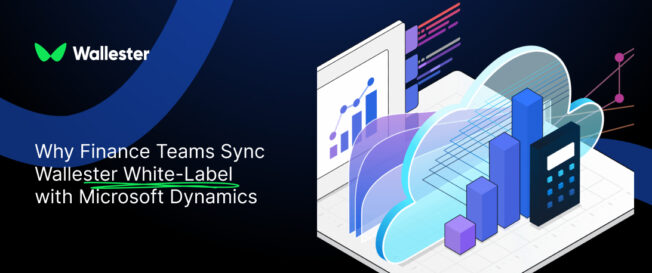When we talk about the future of payments, it’s easy to get lost in hype. There’s nothing wrong, of course, with picturing autonomous AI agents shopping on our behalf or refrigerators ordering their own groceries. But for the millions of companies trying to close their books at the end of the month, the future is still something far more practical.
It’s about onboarding in hours instead of weeks. It’s about systems that don’t go down during a sales peak. And it’s about having a clear, real-time view of who is spending what, when, and why.
For decades, companies have turned to banks as default partners for these services, but that relationship has been fracturing for a while. The future of payments is already here, and companies are no longer willing to wait for their banks to catch up.
The Old Guard Is Losing Ground
The truth is that for small and mid-sized enterprises (SMEs) the banking relationship has long been a source of quiet frustration. It’s a sentiment the data now confirms. Only 15% of small merchants and 22% of mid-sized merchants, for instance, are satisfied with their current banking relationships, according to Capgemini’s World Payments Report 2025.
And this is more than just passive dissatisfaction. For traditional banks, it’s an active crisis, a signal of what at the moment looks like an irreversible shift in the market. Global non-cash transactions have grown at four times the rate of global GDP, yet banks have still managed to lose their grip on the merchant-servicing business. Why? Mainly because in the three areas that matter most – speed, reliability, and data – their systems are failing to deliver.
Where the Old Model Is Breaking Down
For any business, time is money, so the friction from legacy banking systems has become a measurable and unacceptable cost.
1. The Onboarding Hurdle
The onboarding process is the first point of contact between a business and a payment provider. And for banks, this is often their first failure.
The same report states that bank onboarding is frequently slow, manual, and opaque. More precisely, it can take anywhere up to seven days to complete – and in a digital-first economy, this is an eternity.
Fintechs, by contrast, use modular workflows to let merchants begin transacting (sometimes in a limited capacity) while verification completes in the background. The result is onboarding in hours, not weeks.
This inefficiency is mirrored in the costs as well: a bank spends an average of $496 to onboard one merchant, while a fintech spends $214. For a business owner, the message is simple: one partner values your time and the other doesn’t.
2. The Cost of Downtime
Once onboarded, the next challenge is reliability. Merchants experience up to nine hours of payment system downtime annually.
Let’s say some of those hours fall during your Black Friday sale or peak-season rush. In that case, every declined transaction isn’t just a lost sale, it’s also a permanent loss of customer trust. This unreliability is a consequence of outdated back-end architectures that weren’t designed for the volume and speed of modern business.
3. The 2% Fraud Tax
Fraud remains a major drain as well. Merchants have lost approximately 2% of their total revenue to payment fraud in the past year.
Here, too, legacy systems are the problem. The report finds that 79% of banks operate with siloed fraud monitoring, meaning they can’t see the full picture in real time. New payment solutions, however, use integrated platforms to spot anomalies and prevent fraud before it happens, instead of reporting on it a month later.
It’s Not About Payments So Much As Data
The fundamental disconnect is this: Banks still think they are in the business of processing payments. New players know they are in the business of managing data.
It’s exactly this distinction that allows modern platforms to move beyond mere processing and provide genuine business intelligence. The data is stark: 64% of fintechs use data to personalize merchant experiences and offer insights. Only 23% of banks do the same.
And how does this look in practice? Your bank gives you a CSV file of transactions. A modern platform gives you a real-time dashboard showing that your marketing team’s ad spend on one platform is suddenly yielding half the results, or that one project is about to overrun its budget.
Think of one as a logbook and the other as a control centre.
Getting the Best of Both Worlds
Interestingly, banks still hold one crucial advantage: the majority of merchants still trust them more than fintechs.
This creates a dilemma. Businesses are forced to choose between the trust of a bank and the seamless functionality of a fintech. But what if they didn’t have to?
Wallester Business closes this gap. It combines the institutional security of a Licensed Visa Principal Member and an Estonian financial licence with the speed, flexibility, and intelligent tools of a modern platform.
The future that companies are demanding is simply a system that provides solutions to the problems that have long been ignored.
With Wallester Business:
- Instead of 7-day onboarding, you get verification in hours.
- Instead of siloed data, you get a unified dashboard with 300 free virtual cards to give you granular, real-time control over every single expense.
- Instead of generic service, you get tools to set custom limits, whitelist merchants, and automate workflows, all synced directly to your accounting software via native integrations or API.
Businesses are no longer asking for a better bank. They are demanding a new kind of financial partner, one that is built for the way they work now.




